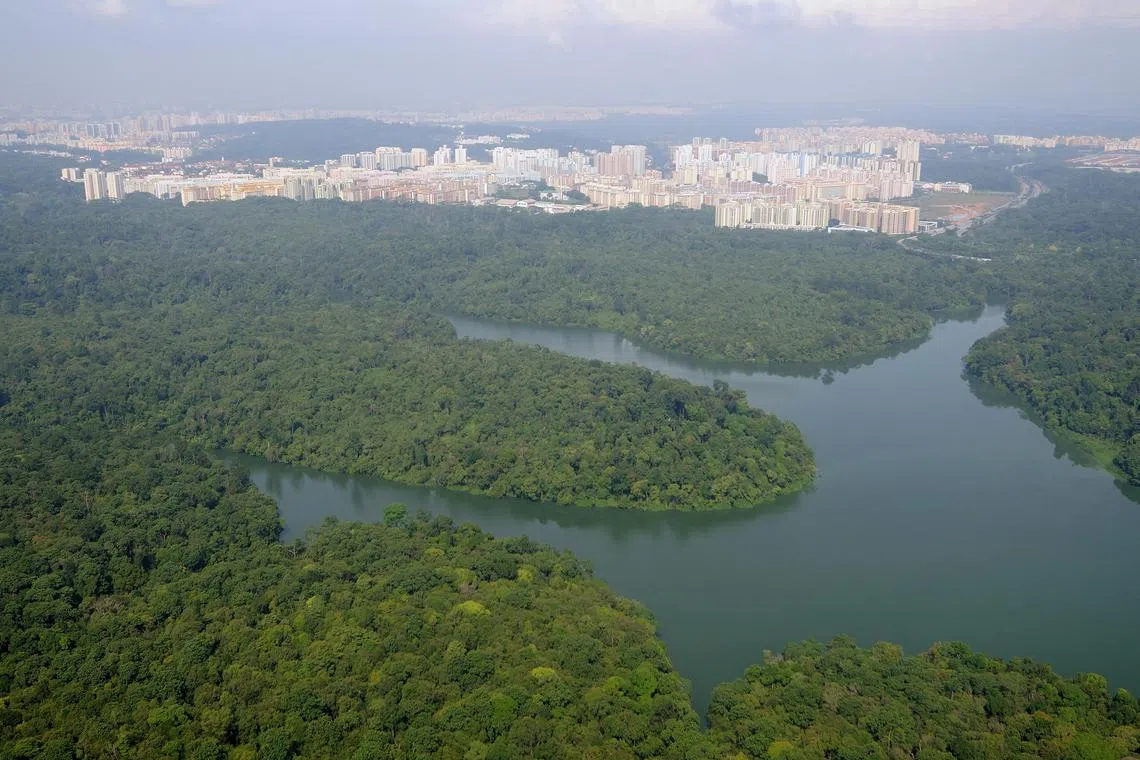Carbon emissions from land use changes in S’pore increased ninefold from 2016 to 2018: Report
Sign up now: Get ST's newsletters delivered to your inbox

When forests and vegetation which are good absorbers of carbon dioxide are converted into housing and other development projects, the gas is released.
PHOTO: NPARKS
Follow topic:
SINGAPORE – Carbon emissions from land use changes in Singapore have increased around ninefold from 2016 to 2018, according to a recent report.
When forests and vegetation that are good absorbers of carbon dioxide (CO2) are converted into housing and other development projects, the gas is released.
Land in Singapore contributed to 0.21 per cent of the country’s overall greenhouse gas emissions in 2018, up from 0.03 per cent in 2016.
Carbon emissions from land use changes increased from 11.95 kilotonnes in 2016 to 106.36 kilotonnes in 2018.
CO2 is the main planet-warming gas driving climate change and forms the bulk of Singapore’s greenhouse gas emissions, followed by other harmful gases such as methane and nitrous oxide.
In response to queries from The Straits Times, Dr Lena Chan, a senior director of international biodiversity conservation at the National Parks Board (NParks), said that between 2016 and 2018, there were some forested areas that were converted into settlements, though there was no loss in legally protected nature reserves.
Singapore has four protected nature reserves – Bukit Timah Nature Reserve, Central Catchment Nature Reserve, Sungei Buloh Wetland Reserve and Labrador Nature Reserve.
“Such conversions from high carbon stock areas have resulted in an increase in CO2 emissions, though existing vegetated areas can buffer some of the emissions caused by land conversions,” Dr Chan said.
Carbon stock refers to the amount of carbon held within a piece of land. Natural habitats like forests are considered areas of high carbon stock because they lock plenty of carbon in the soil and in the roots, trunks and leaves of plants. In doing so, these natural ecosystems help to keep carbon out of the atmosphere.
The 2018 figures for how the land-use sector absorbs and contributes to emissions were part of Singapore’s fifth Biennial Update Report, which the country submits to the United Nations every two years as part of its international obligations.
The report provides the breakdown of national greenhouse gas emissions and removals, and actions taken to reduce them.
Data on emissions and removals from land use in 2016 was outlined in the report submitted in 2020, while the 2018 data was highlighted in the latest report, submitted on Nov 1 ahead of the COP27 climate change conference in Egypt.
The burning of fossil fuels, such as natural gas for energy, continues to be the main contributor of Singapore’s greenhouse gas emissions, accounting for 93.5 per cent in 2018.
To enhance the carbon stock of vegetation in the years to come, NParks will continue to work with the community to sustain its greening efforts, said Dr Chan.
For instance, through the Nature Conservation Masterplan, which outlines the nation’s biodiversity conservation plans for the next five years, the natural capital in the nature reserves is being extended to also include the networks of nature parks surrounding them, she added.
Ecological connectivity will be established islandwide through nature corridors comprising park connectors, nature ways and restored habitats within parks and gardens as stepping stones, through NParks’ Ecological Profiling Exercise (EPE), which was introduced in 2022.
The EPE supports NParks’ science-based approach towards nature conservation, focusing on the ecological connectivity of various sites, as well as the approach to conserve ecologically sensitive areas to balance conservation and development. This is accompanied by reforestation in the nature reserves and nature parks, and intensification of tree planting along streets and within gardens and parks, said Dr Chan.
Since the launch of the OneMillionTrees movement in April 2020, which entails planting that number by 2030, more than 460,000 trees have been planted across Singapore to date.
Correction note: The National Climate Change Secretariat and NParks have clarified that the measurement unit should be kilotonnes instead of tonnes. We are sorry for the error.


